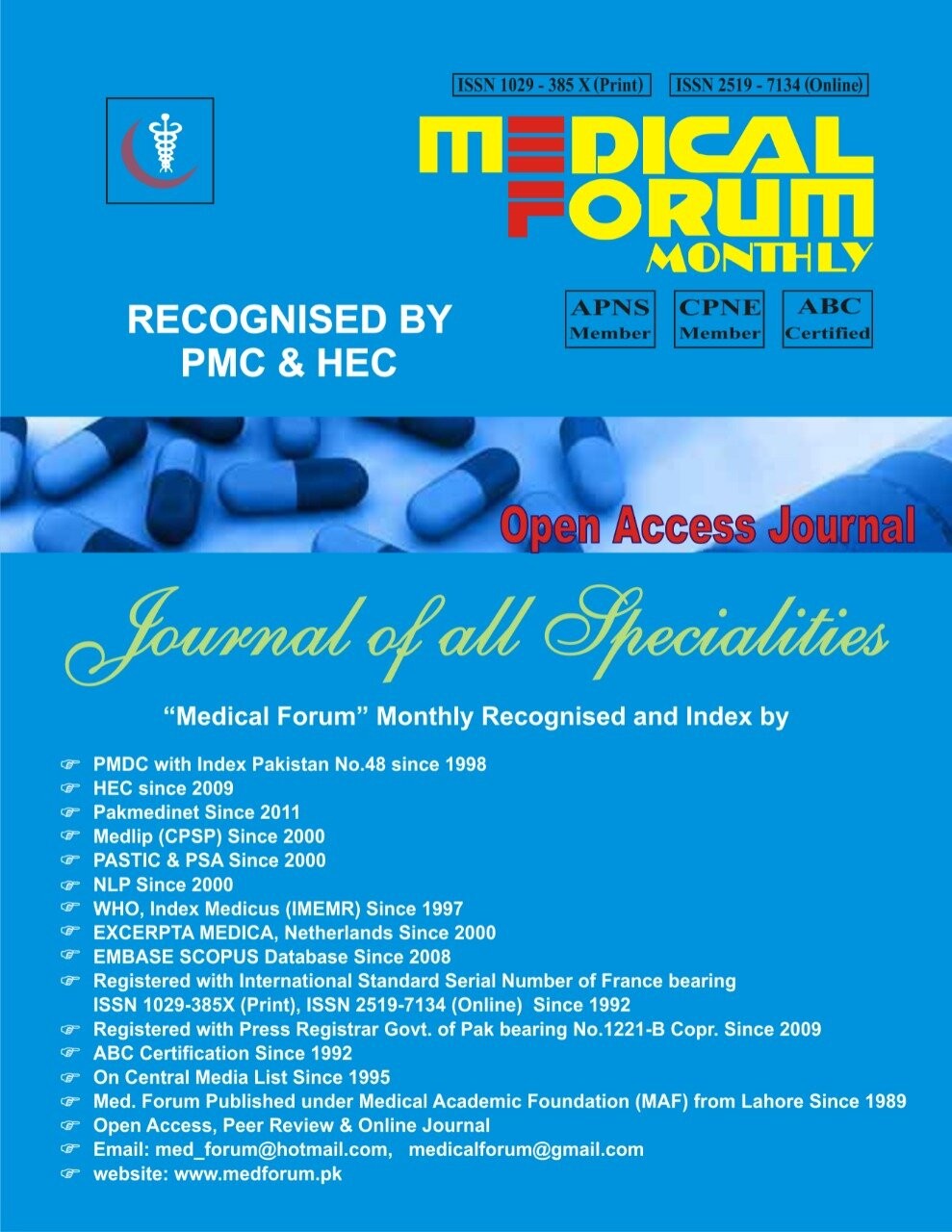
13.Prevalence of Modic Changes in Cervical Spine and Their Association with Disc Herniation
Hira Bushra1, Riffat Kamal1 and Ayesha Zafar2
ABSTRACT
Objective: To evaluate the prevalence of Modic changes (MCs) in the cervical spine and their association with disc herniations (DH).
Study Design: A retrospective study
Place and Duration of Study: This study was conducted at the Department of Radiology, Ch. Pervaiz Elahi Institute of Cardiology Multan from 4th March 2021 to 4th March 2022.
Materials and Methods: A total of 250 patients elder than 50 years old were included in the study. The cervical MRI scans of these patients were analyzed for prevalence, location and category of MCs and DH. 100 scans among these scan images were assessed by an independent observer (medical intern) for interobserver reliable diagnosis and this observer evaluated the scans after 30 days again for intraobserver reliability.
Results: Only 215 participants were selected for final analysis among which Modic changes were found in 85 (39.5%). MCs type 1was less observed (3.5%) while type 2 was dominant (10.5%). DH were observed in 170 participants (79%). Both MCs and DH were mostly found at C5/6 and C6/7 discs. Modic changes and disc herniations were positively related (risk ratio=2.3). The intraobserver reliability was perfect (k= 0.78) and the interobserver reliability was upper-moderate (k=0.49).
Conclusion: Majority of patients showed Modic changes, mostly types two were seen in the cervical region, frequently in C5/6 and C6/7. MCs and DH were found in patients at the same level.
Key Words: Modic changes, disc herniation, bone marrow, bone marrow oedema, cervical spine
Citation of article: Bushra H, Kamal R, Zafar A. Prevalence of Modic Changes in Cervical Spine and Their Association with Disc Herniation. Med Forum 2022;33(5):53-56.
